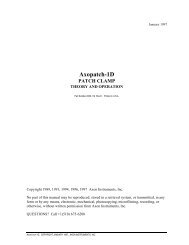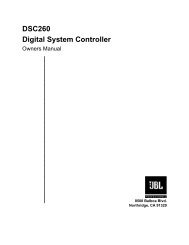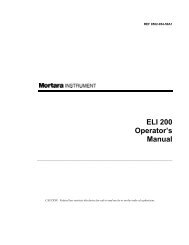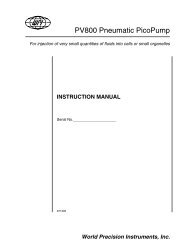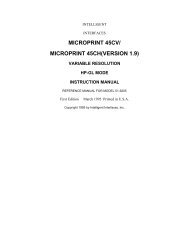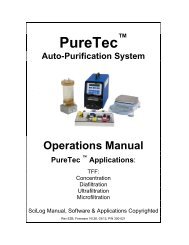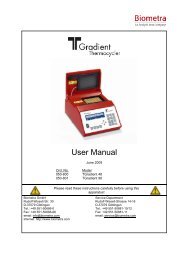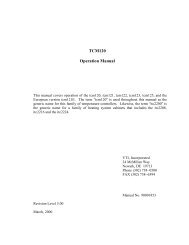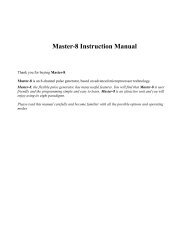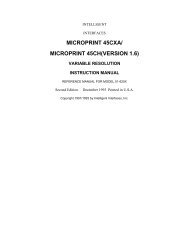Chromatotron
Chromatotron
Chromatotron
Create successful ePaper yourself
Turn your PDF publications into a flip-book with our unique Google optimized e-Paper software.
The output tube should be within the test tube to prevent loss by splashing as<br />
the bubbles in the eluate burst.<br />
A small amount of a colored compound with a high Rf, e.g. azobenzene or the<br />
test mixture (page 41), added with the mixture to be separated, will mark the<br />
"solvent front"; collection of fractions can then be delayed until this has been<br />
eluted. When collecting UV absorbing compounds, continue to collect<br />
several fractions after the UV absorbing band has apparently passed<br />
from the rotor. The last part of the band is not easily seen and significant<br />
amounts of compounds can be missed. The trailing edge of a band can be<br />
detected by spotting the eluate on a TLC plate and observing the residue in UV<br />
light after the solvent has evaporated.<br />
Since the separations are completed in a very short time, automatic fraction<br />
collection has few advantages over hand collection. If a fraction collector is<br />
used, choose drop counting or time mode. Small fractions will partially remix in<br />
collectors using a siphon tube. The output from the <strong>Chromatotron</strong> will not pass<br />
through long lengths of narrow tubing. Use tubing with a bore of about 1/16"<br />
(1.5 mm) to connect to a fraction collector and keep the gradient to a<br />
minimum. The base of the <strong>Chromatotron</strong> can be removed to allow positioning<br />
over a fraction collector.<br />
CLEAN-UP AND REGENERATION OF THE SORBENT LAYER<br />
After each separation or when sorbent layers have become contaminated with<br />
polar compounds, a clean-up with a polar solvent such as acetone is required.<br />
Use at least 40 ml per mm of layer thickness. At the start of the clean-up,<br />
unscrew the inlet about a quarter turn to move the wick and solvent flow closer<br />
to the center of the rotor where traces of samples may remain.<br />
The clean-up solvent can be removed from the sorbent by drying in the open<br />
air, allowing sufficient time (at least l2 hr for l mm, 24 hr for 2 mm and 48 hr for<br />
4 mm layers) for evaporation of the solvent and of water that condenses on the<br />
cold sorbent. A metal “heat sink” under the rotor will encourage the<br />
evaporation. Drying with slight heating (the lamp and bucket on page 27 is<br />
effective) may also be used (and will be essential in humid climates) after the<br />
solvent has completely evaporated. In case some solvent is still present, do<br />
not use an oven. Take care to remove all traces of acetone from the solvent<br />
reservoir and tubing if UV absorption is to be used later for detection.<br />
17



